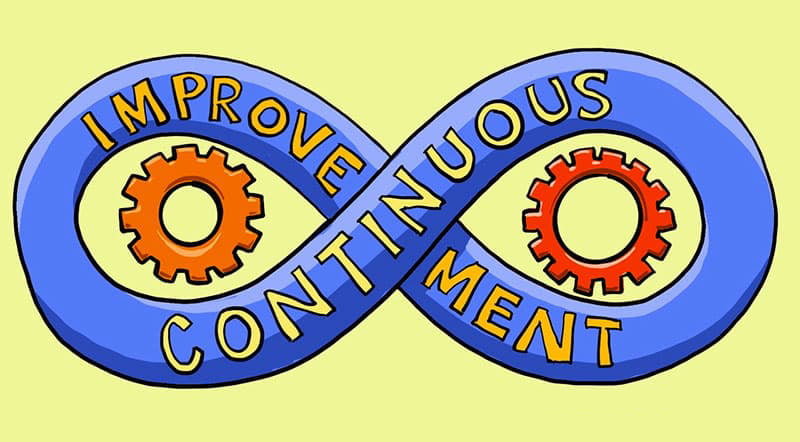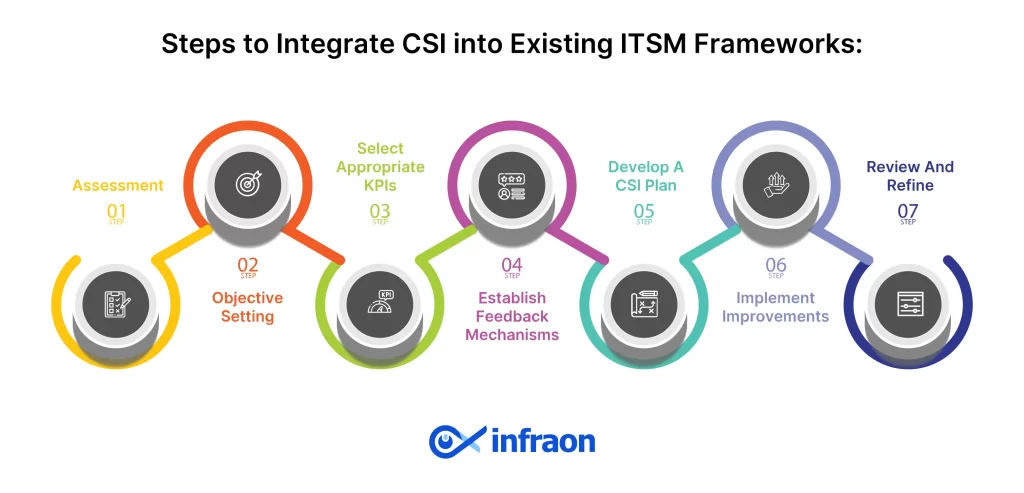Modern enterprises face numerous challenges in maintaining and improving service delivery. These range from rapidly changing technological advancements to escalating customer expectations and the need for agile responses to market shifts.
It’s why, as the name implies, Continuous Service Improvement (CSI) is a huge part of IT Service Management (ITSM). CSI represents a systematic approach to identifying and implementing valuable changes in IT processes and services. Its primary aim is to ensure that IT services remain aligned with changing business needs.
CSI methodologies empower enterprises to elevate service quality systematically, ensuring alignment with customer expectations. Through regular identification and implementation, they promote superior performance, cost reduction, and resource optimization while responding to new technologies and trends in a timely manner.
Related blog: How Do ITSM Systems with AI Based Collaboration Workspaces Enhance Productivity and Foster Customer Success?
ITSM challenges addressed by CSI
- Service quality stagnation: Without CSI, enterprises risk service quality stagnation, failing to meet evolving customer demands
- Process inefficiency: In the absence of continuous improvement, processes become inefficient, leading to wasted resources and increased costs
- Lack of flexibility: Enterprises without a structured CSI approach struggle to adapt to technological advancements and market changes, impairing their competitive edge
Evolution of CSI practices

Historically, CSI practices were predominantly reactive, with enterprises initiating improvements primarily in response to service failures or customer complaints. In contrast, contemporary practices embrace a more proactive and strategic framework.
The shift is characterized by the integration of improvement methodologies throughout the entire service lifecycle, from the initial design and development phases through to delivery, maintenance, and eventual retirement.
Key aspects include:
- Early integration: Improvements are considered at the earliest stages of service design, ensuring that services are not only fit for purpose upon launch but also adaptable to future requirements and technologies
- Preventive measures: By anticipating potential issues and areas for enhancement, enterprises can implement preventive measures, reducing the likelihood of service disruptions and enhancing customer satisfaction
- Strategic alignment: CSI practices are closely aligned with the strategic goals of the enterprise, ensuring that improvements contribute to long-term objectives and competitive advantage
- Feedback loops: Robust mechanisms for collecting and analyzing feedback from all stakeholders (including end-users, IT staff, and management) are established, developing a culture of continuous learning and adaptation
- Quantitative and qualitative metrics: The use of quantitative data, as well as qualitative insights (such as user feedback), guides the prioritization and implementation of improvements
What are the key elements of CSI in ITSM?
The CSI model guides enterprises through the process of identifying, implementing, and measuring improvements. It comprises several stages, each critical to the continuous improvement lifecycle:
- Define the objectives: Clarify what you aim to achieve through CSI, aligning with broader enterprise goals
- Measure the current state: Utilize existing data to establish a baseline for current performance
- Gather data: Collect additional data for a comprehensive understanding of current operations and potential improvement areas
- Process the data: Analyze the data to identify trends, anomalies, and opportunities for enhancement
- Analyze the information: Translate data into actionable insights, determining what improvements could be made
- Present and use the information: Develop a strategy for implementing improvements based on analyzed data
- Implement improvement: Execute the planned improvements, monitoring their impact over time
- Review and evaluate: Assess the performance of the improvements against the initial objectives, adjusting strategies as necessary
Steps to Integrate CSI into Existing ITSM Frameworks:

- Assessment: Conduct a comprehensive review of the current ITSM framework to identify existing strengths and areas for improvement
- Objective setting: Define clear, measurable objectives for CSI initiatives, ensuring they align with overall enterprise goals
- Select appropriate KPIs: Identify KPIs that will measure the success of CSI efforts and provide insights into areas for further improvement
- Establish feedback mechanisms: Implement mechanisms for collecting feedback from all relevant stakeholders, creating a continuous loop of information for ongoing improvement
- Develop a CSI plan: Based on the assessment and objectives, create a detailed CSI plan outlining specific initiatives, responsible parties, timelines, and expected outcomes
- Implement improvements: Execute the CSI plan, monitoring progress closely and adjusting strategies as necessary based on real-time data and feedback
- Review and refine: Regularly review the impact of implemented improvements, using findings to refine future CSI initiatives and ensure continuous alignment with enterprise objectives
The Role of Feedback in Continuous Improvement within ITSM
Feedback collection in ITSM spans various channels and formats, including service desk reports, user surveys, incident logs, and performance analytics. Each source provides a unique perspective, collectively offering a comprehensive overview of service performance and areas for improvement.
Analyzing this feedback requires a structured approach, utilizing quantitative methods, such as statistical analysis for performance metrics, and qualitative techniques, such as thematic analysis for user comments and suggestions.
Within the CSI framework, feedback informs decision-making at every stage, from identifying improvement opportunities to evaluating the success of implemented changes. It drives improvements across several key processes, such as:
Service strategy
Feedback helps to ensure that the IT service strategy remains relevant and aligned with enterprise objectives. It can indicate shifts in business needs or user expectations, prompting a strategic review or adjustment.
Service design
User and stakeholder feedback can highlight deficiencies in current service designs or suggest features and improvements for new or existing services. It offers a clear blueprint for guiding the design process toward more user-centric solutions.
Service transition
Feedback on previous service transitions can reveal risks and challenges. It enables better planning and management of future transitions to minimize disruptions and enhance user experience.
Service operation
Continuous feedback during the operation phase enables real-time adjustments and proactive service management. Hence, it becomes easier to drive high service quality and availability.
However, to fully leverage feedback in driving continuous improvement, enterprises must institutionalize feedback mechanisms across all ITSM processes. It involves establishing formal channels for collecting and analyzing feedback, integrating feedback analysis into regular management reviews, and developing a responsive culture that values and acts on feedback. Ultimately, it would make sure that improvements are data-driven, user-focused, and aligned with strategic goals.
Related blog: How AI-powered ITSM Can Help Better Understand User Needs



















